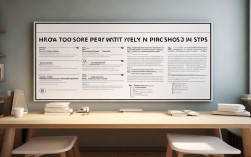托福作文多选题是一种常见的题型,要求考生从多个选项中选择最合适的观点进行论述,或者对多个选项进行比较分析,这类题目不仅考察考生的语言表达能力,更考验其逻辑思维、批判性阅读和论证能力,本文将从题型特点、解题策略、结构安排和注意事项四个方面,详细解析托福作文多选题的应对方法。

题型特点与分类
托福作文多选题通常出现在独立写作部分,主要分为两类:单选题(要求选择一个最佳观点)和多选题(要求选择多个观点并论述)。
- 单选题示例:Some people believe that university students should specialize in one field, while others think they should study a variety of subjects. Which do you agree with? Explain why.
- 多选题示例:Which of the following do you think is the most important for a city to be great? 1. Good transportation 2. Affordable housing 3. Cultural attractions. Choose two and explain your reasons.
多选题的核心在于对比与权衡,考生需明确选择标准,实用性”“长期影响”或“个人价值观”,并基于此筛选选项。
解题策略:四步法
审题与关键词分析 中的限定词(如“most important”“best”),明确选择数量。
- 识别隐含逻辑,例如题目问“which contributes more to happiness”,需围绕“幸福感”的定义展开。
选项筛选与排序
- 排除法:剔除与主题无关或逻辑矛盾的选项,若题目问“环保措施”,选项“降低娱乐税收”可能被排除。
- 优先级排序:根据个人熟悉度、论据充分性或题目倾向性排序,可参考以下表格:
| 选项 | 论据充分性 | 个人熟悉度 | 优先级 |
|---|---|---|---|
| A | 高 | 中 | |
| B | 中 | 高 | |
| C | 低 | 低 |
论点构建与例证
- 每个选项至少分配1个核心论点+1个具体例子。
- 例证需具体化,避免泛泛而谈,论述“交通便利”时,可提及“地铁网络覆盖率达80%,减少通勤时间30%”。
逻辑衔接与反驳
- 使用转折词(however, nevertheless)对比未选选项,突出所选优势。
- 承认其他选项的合理性,再强调自身选择的更优性,体现辩证思维。
结构安排:经典五段式
开头段(Introduction) 明确选择(如“From the options provided, I believe A and B are more significant because…”)。
- 用背景句引出话题,“In an era of rapid urbanization, the quality of life in cities has become a global concern.”
主体段(Body Paragraphs)
- 每段聚焦一个选项,采用“观点+解释+例子”结构。
- 示例框架:
- 主题句:Affordable housing is crucial for social stability.
- 解释:High housing costs force low-income families into debt, limiting their access to education and healthcare.
- 例子:In Tokyo, government-subsidized housing projects reduced homelessness by 25% over five years.
让步段(Concession)
- 简述未选选项的合理性,While cultural attractions enhance tourism, their impact on daily life is less direct than transportation.
结尾段(Conclusion)
- 重申观点,总结核心论点。
- 升华主题,Ultimately, a great city balances practical needs and cultural vitality, but prioritizing infrastructure lays the foundation for sustainable growth.
注意事项
- 避免绝对化表述:慎用“all”“never”,改用“many”“tend to”。
- 控制时间分配:审题5分钟,写作20分钟,检查5分钟。
- 语言多样性:替换高频词(如“important”→“vital”“essential”),使用复杂句(定语从句、状语从句)。
FAQs
Q1: 遇到完全不熟悉的选项时,如何快速构思论点?
A: 可从普世价值(健康、安全、教育)或社会功能(经济、文化、环境)切入,若选项“保护历史建筑”陌生,可关联“文化传承”和“旅游业发展”,结合具体城市案例(如巴黎的卢浮宫)展开。
Q2: 多选题是否需要平均分配篇幅?
A: 不必,根据论据强度调整篇幅,优势选项可多写1-2句话,但需确保每个选项都有明确论述,若选项A的例子更丰富,可分配2句话解释+3句话例证,而选项B用1句话解释+2句话例证。










